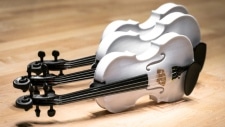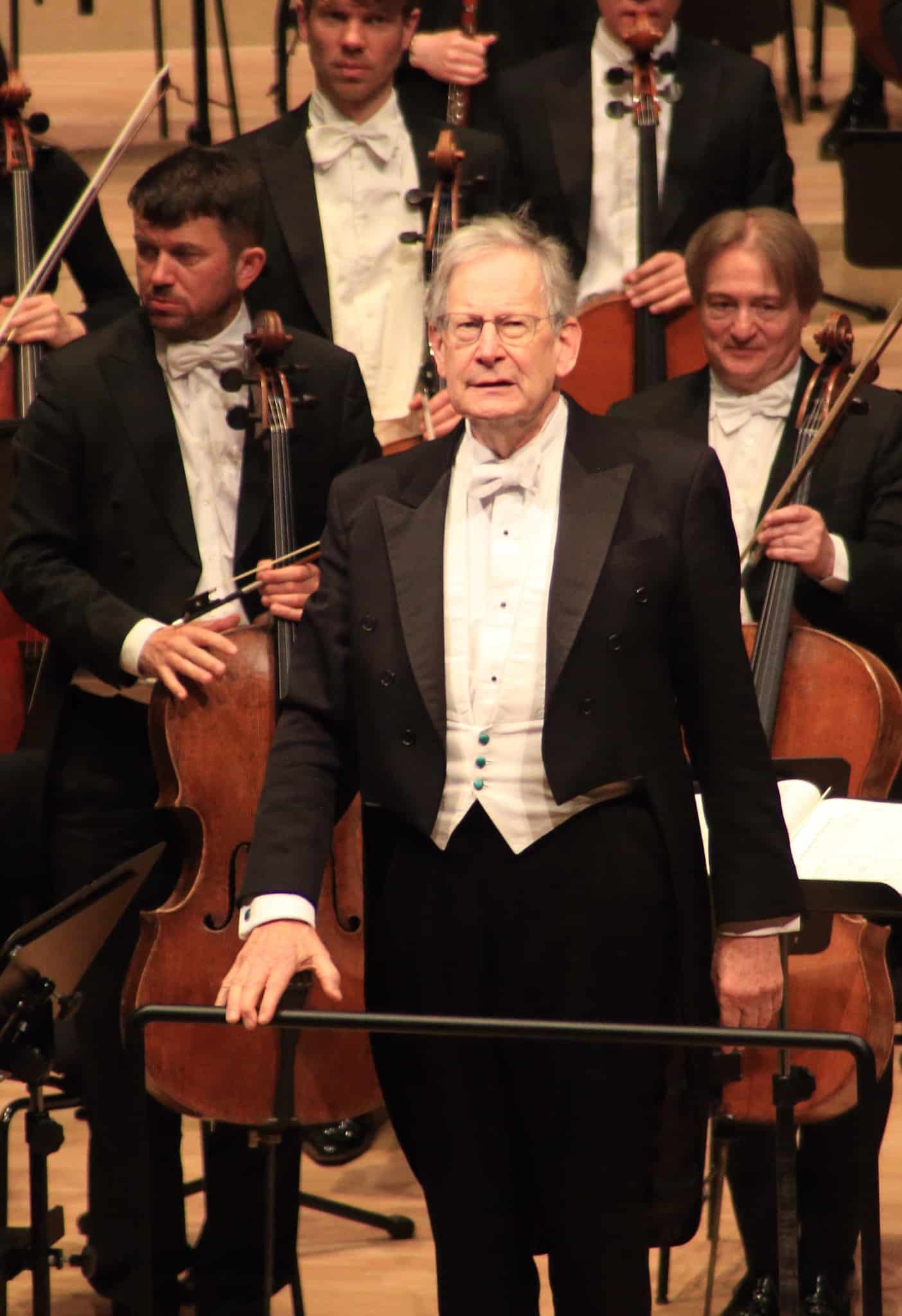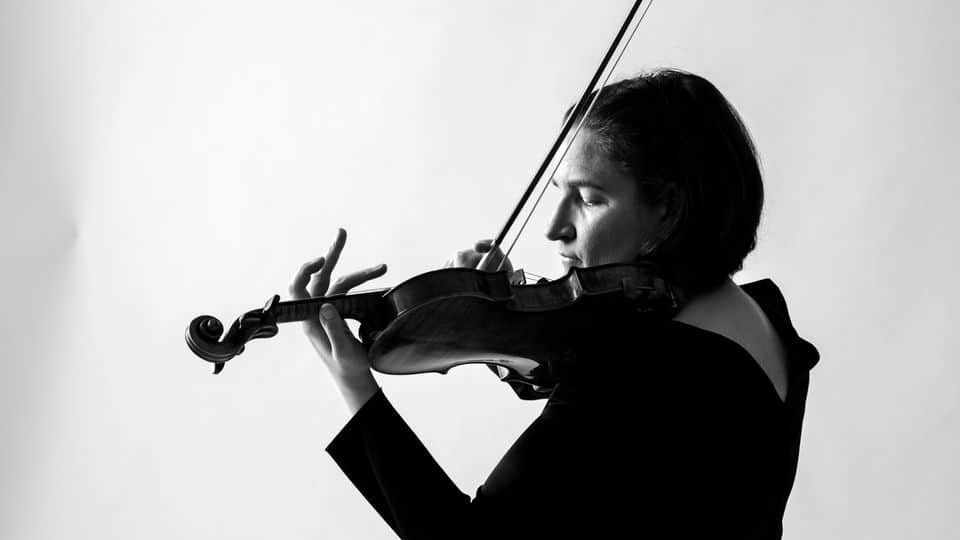The orchestra with printout violins
mainIt’s the Ottawa Symphony Orchestra, trying out instruments made from plastic with a 3D printer.


It’s the Ottawa Symphony Orchestra, trying out instruments made from plastic with a 3D printer.

Eyebrows rose in April last year when the…

The US violinist has posted this message on…

English National Opera has rolled out plans for…

Laura Samuel, Leader of the BBC Scottish Symphony…

Session expired
Please log in again. The login page will open in a new tab. After logging in you can close it and return to this page.
Any possibility of making polymer conductors?
No, but I’ve come across a few semi-conductors in my time.
LOL!
Polymer conductor ?
Remember YuMi, the ABB robot who (who…) did his best to conduct Andreas Bocelli’s performances in Pisa, 13 Settembre 2017 ? Polymer it was.
anything on 3D printed musicians anywhere ? 😉
“What the future might look like”? Making things out of non-biodegradable plastic that have always previously been made using sustainable wood? If they say so.
PLA, the most commonly used filament for 3d printing, is biodegradable (its made out of glycerol, i.e. sugar). I couldn’t figure out what they printed the instruments from, but presume it was carbon fibre laced – probably mixed with nylon for strength. The ideal of course would be a wood fill mix – usually this is PLA with about 30% or more wood chip added. The wood fill is often recycled, but not always.
Yeah, this looks like carbon fiber re-inforced SLS nylon. That’s a material only available for industrial printing technology. PLA is used in the more budget extrusion machines (like what I use, and most folks that have printers in their homes).
I have had great success using carbon fiber PLA for my Modular Fiddle. For more: https://www.openfabpdx.com/modular-fiddle
Wood fill is tricky business! I haven’t had much fun printing with it, but I haven’t tried in several years.
I’m on the lookout for very stiff materials that work well for violin acoustics… PLA is pretty good.
3D printed violins should serve as testbeds for experimentation! Not concert quality instruments. We have better manufacturing methods for that — wood or plastic.
Perfectly suited for Klangkunst.
Television sound is usually so poor that I cannot really form an opinion based on these Mozart excerpts, particularly since there was no A/B comparison with her regular fiddle. I’d like to try one myself.
A 3D printed violin could be useful for outdoor or cold temperature concerts where most of us take our worst “playable” violin anyway (Heifetz purchased an aluminum violin for outdoor concerts — donated it to a WWII scrap drive as I recall).
The lower strings sounded a bit rubbery but that is a failing of some “normal” violins as well, again particularly given television recorded sound.
Heifetz had an aluminum violin that he used when sailing. I don’t think he used it in a concert anytime.
It is tough to find a truly useful application for 3D printed violins. I would argue that yes — outdoor performance and playing is a good one — but even more significant, 3D printing and open source designs give us the opportunity to experiment with and share violin designs in a way that hasn’t yet been possible.
Most 3D printed violins try to simply reproduce the geometry found in wood instruments. I think that doesn’t go far enough.
Check out this A/B/C comparison of my 3D printed Modular Fiddle with two traditional wood instruments (one worth $200K). https://youtu.be/Qfyljb8-I9A
You’ll find that the wood instruments are obviously superior. That said, the folks at David Kerr report that this ModFiddle has better sound and playability than most budget violins (sub $300).
Exactly why are they doing this? Is it to show how “cool” or “high tech” the Symphony is, maybe appealing to twenty-somethings?
It is really quite peculiar and embarassing, one would presume that professional musicians had at least basic understanding of highquality musical instruments production terms to prevent them from coming up wich such an awkward undertaking. Seriously? This he thinks is the “future” sound? That what comes out of a cheap plastic copy of a real violin? It’s not more than a toy and a gadget (but if it sells the seats for one or two evenings, it of course has its legitimacy as a marketing gag)! Last week, the EU heavily restricted their regulations for plastic production and sale since its use is one of the biggest environment-polluters. There is nothing as valuable, sustainable and environment-friendly than a high quality product from nature materials that can be used for hundreds of years!
It is peculiar and embarrassing that internet commenters rush to posture outrage and alarm over this fleeting experiment, apparently unaware that violin we have today is the result of many experiments regarding materials and constructions over the last several centuries.
I don’t think you need to worry that these will sweep the concert stage but the experience gained may point the way to future investigations.
Yes! Every new variation of violin informs future variations! Regardless of the outcome or the quality of the instrument produced, I agree that we should delight in this kind of experimentation.
The development of the violin over the years is fascinating. Even more interesting, though — the design is largely unchanged since the 18th century. What can we do with new manufacturing methods and materials that could perhaps make a different kind of violin? Better is subjective — we should aim for different.
Plug: the Modular Fiddle is a testbed for violin design. https://openfabpdx.com/modular-fiddle
It sounds “green”, as we say … could it ever be “played in”?
This is the perfect solution for conductor-less orchestras! Just replace the sheet music with digital tablets and bingo-
there’s your orchestra of the future!
What? Plastic violins brings more people to want to learn the instrument?? The reason for shrinking interest in violinplaying/learning is not that people can’t afford a wooden beginners violin but is caused by the requirements that violin learning demands: consequence, ambition, daily practice, supportive and musically interested environment, peer group that also are into music making and daily practice. No plastic violin in the world can ever replace or compensate that!